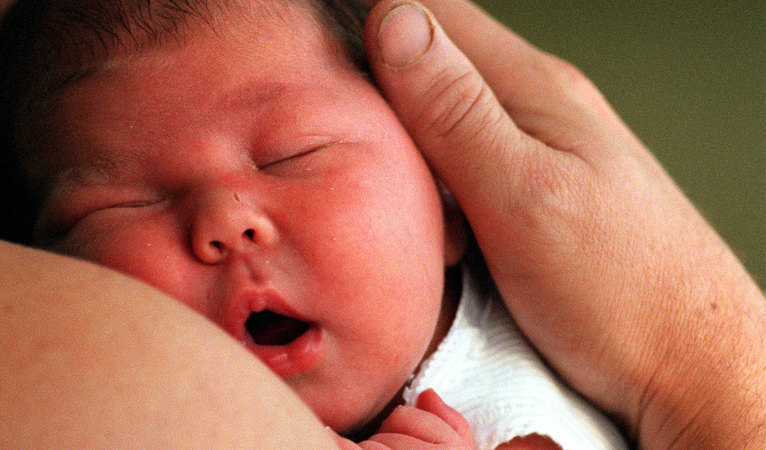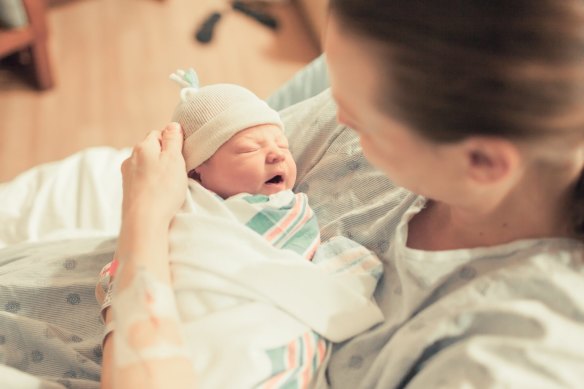Save articles for later
Add articles to your saved list and come back to them any time.
There is a great deal of information for a new mother to absorb preparing to leave maternity hospital. Often within hours of delivery, and its inherent physical and mental demands, she is expected to take on all the responsibilities and needs of the new infant as well as resuming the “normality” of everyday family life.
As our report today by health reporter Henrietta Cook reveals, Australian women are being discharged from hospital at record speeds after giving birth, with almost one in two mothers now sent home one day or less after having uncomplicated vaginal births.
The average number of days women spend in hospital following childbirth has steadily declined.Credit:
The report is based on Australian Institute of Health and Welfare data that shows a trend towards shorter postnatal care. The average number of days women spend in hospital following childbirth has steadily declined from three days in 2011 to 2.5 days in 2021. In 2021, most mothers had a postnatal stay of three days or fewer (75 per cent).
The report states that the aims of postnatal care in hospital are to monitor mother and baby,and provide advice and support on physical recovery, breastfeeding, parenting skills and linking to support in the community. But with such a rapid turnaround, could the opportunity to impart such valuable information be compromised?
It used to be common for women to spend at least a week in a public hospital after a standard vaginal birth, and those who had a caesarean remained in hospital for about 10 days, as one expert points out in our story.
A shorter stay may be more efficient from a hospital’s perspective, making beds available more quickly to provide care for more patients, as well as reducing the cost per patient. However, stays that are too short may reduce the quality of care and result in poorer patient outcomes.
Clearly, it is not realistic that there is a one-size-fits-all duration of stay. The diversity of birthing outcomes, intervention and infant and parent health are all determining factors. It must also be acknowledged that some new parents may wish to return as soon as possible to their home environment. But shorter hospital stays should be by choice and only if it is likely to ensure the best possible outcome for newborns.
Most hospitals offer a postnatal midwifery home visiting service and there are government-funded facilities, such as child health clinics, in many communities that provide support for new families and for help with feeding a newborn. But, as all parents know, babies, especially new ones, don’t always operate to the schedule of a health clinic.
Monitoring the mental health of a new mother and ensuring the smooth establishment and success of feeding, whether by breast or bottle, can be hampered by postnatal care outside the 24/7 consistency of the hospital environment.
A study that examined the relationship between antenatal care (ANC) and exclusive breastfeeding at discharge from birth admission, published in April in the International Journal of Environmental Research and Public Health, says that increasing the number of infants exclusively breastfeeding on discharge from the hospital is a key goal of breastfeeding policy in NSW. It states, however, that “despite consistent efforts, exclusive breastfeeding on discharge rates have declined from 82 per cent in 2011 to 69 per cent in 2020”.
Starting a family is exhilarating and exciting, but it can also be confusing and fraught.
We support the view of the Australian College of Midwives that it is important that all women have a choice with all aspects of their maternity care at what should be a precious and fulfilling time. We also welcome government funding for the development of national guidelines for postnatal care and the transparency they will, hopefully, instil.
Patrick Elligett sends an exclusive newsletter to subscribers each week. Sign up to receive his Note from the Editor.
Most Viewed in National
From our partners
Source: Read Full Article



